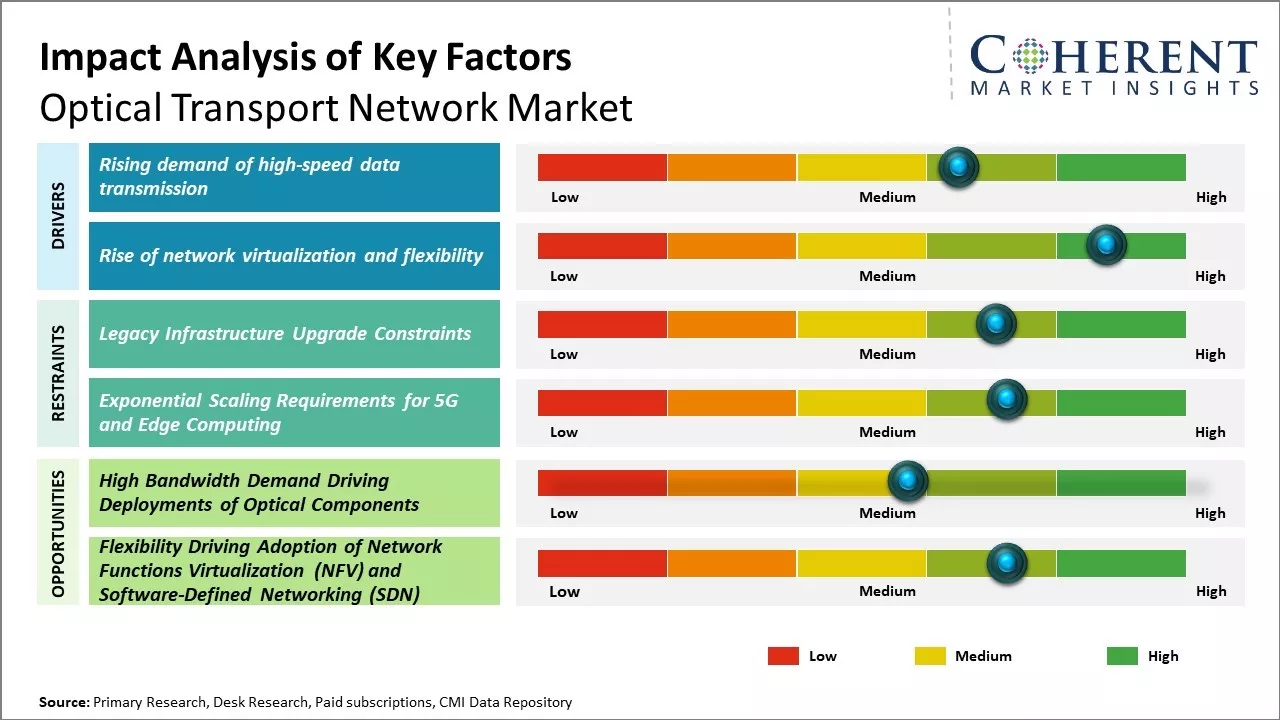The optical transport network market is estimated to be valued at US$ 30.56 billion in 2025 and is expected to reach US$ 65.53 billion by 2032, growing at a compound annual growth rate (CAGR) of 11.5% from 2025 to 2032.

To learn more about this report, Request sample copy
The demand for optical transport network market is expected to be driven by increasing mobile data traffic and investment in 5G infrastructure. Many telecom operators are upgrading their network infrastructure to accommodate the increasing traffic. This is resulting in the higher deployment of optical transport equipment. Also, the declining prices of smartphones and mobile data tariffs are further enhancing the mobile data consumption. Enhanced mobile broadband with 5G networks will require powerful optical transport capabilities to ensure seamless connectivity and coverage, thereby driving opportunities for optical transport network vendors.
Rising demand of high-speed data transmission
With the growth of internet and digital connectivity, the demand for high-speed data transmission has increased exponentially over the years. Various new technologies, such as 5G rollout, internet of things (IoT), machine learning/artificial intelligence, autonomous vehicles, etc., are further driving this demand. High speed data transmission is critical for seamless experience in technologies such as video calling, virtual/augmented reality, streaming high resolution content, and cloud computing. Traditional networks are unable to support such high bandwidth requirements.
Optical transport networks with their ability to carry huge volumes of data at extremely high speeds through fiber optics have become essential infrastructure to support this high-speed digital revolution. They allow internet service providers and telecom operators to scale up their network capacity according to demand surges. Even a slight upgrade in speed from traditional copper networks to optical fiber can improve user experience multifold for technologies dependent on high-speed connectivity. Various industries have realized the benefits of digitization but lack of high-speed network was a bottleneck. Optical networks help overcome this and accelerate digital transformation. Their advantages over traditional networks have made them preferred medium of network expansion globally to support the insatiable demand for data and connectivity. For instance, DataReportal reveals that global internet users reached 4.95 billion at the beginning of 2022, with internet penetration now at 62.5 percent of the world's total population. Additionally, approximately 1.134 Trillion MB of data is created each day. These statistics indicate the escalating usage of data worldwide, necessitating fast and reliable data networks like OTN.
Joining thousands of companies around the world committed to making the Excellent Business Solutions.
View All Our Clients